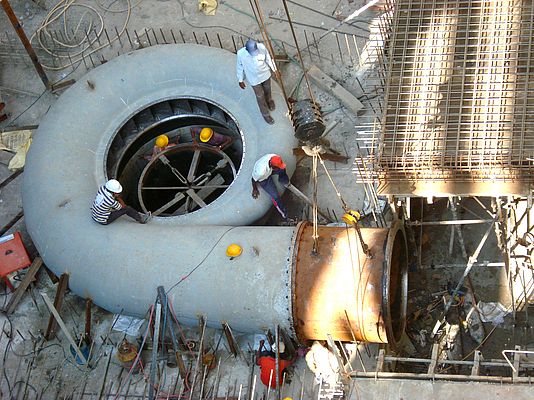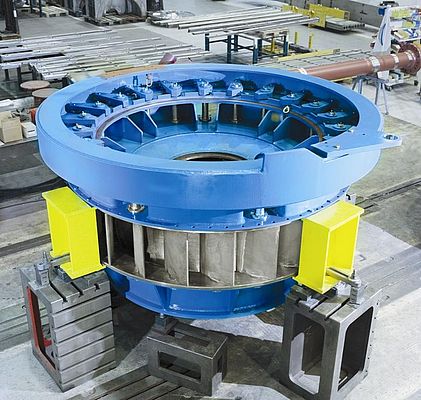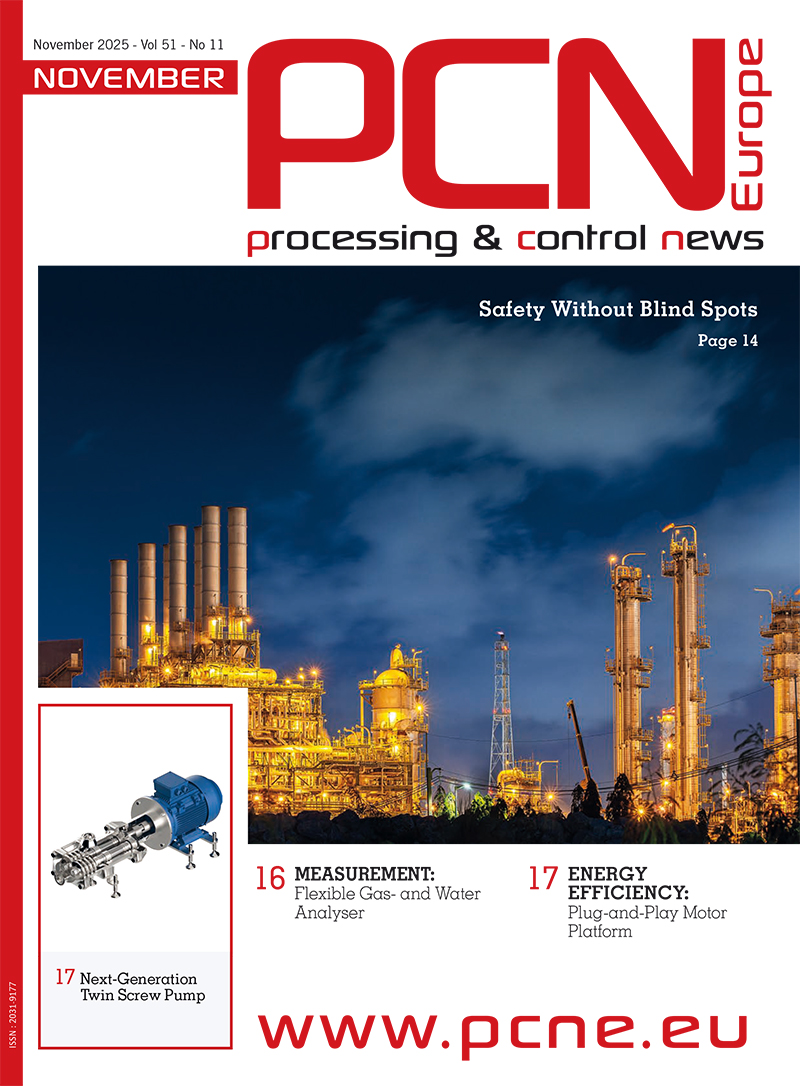The Indian state of Andhra Pradesh has been hit time and again by widespread drought. As some 70% of the population makes a living directly or indirectly from agriculture, the Indian government launched the Jalayagnam project for irrigation of agricultural land.
Infrastructure developments are awarded turnkey as so-called EPC (Engineering, Procurement, Construction) projects in Andhra Pradesh. The EPC contractors are usually large Indian infrastructure companies. In this type of contract the fundamental requirement is that key components - in irrigation projects this would be pumps and motors - can only be supplied by suitably qualified companies that also have a healthy balance sheet and a good funding basis. In order to transport water over long distances, very large volumes of water are conveyed typically with a small number of large vertical volute pumps.
For the Bheema sub-project, Andritz supplied three vertical volute pumps each for two pumping stations in the second half of 2008. Construction of these pumping stations is now in the closing stages and start-up will follow shortly. The first of these, with three units, conveys a total of 63m³/s water to a level 38m higher up. There, some of this water is distributed through canals. Then a second pumping station pumps approximately 32.3m³/s into a canal system that is 22m higher up. The pumps are driven by synchronous motors with nominal ratings of 12 MW and 4 MW, respectively.
These pump units are designed with a three-bearing concept, where each pump has one guide bearing in the motor, one at the pump impeller, and a combined thrust and guide bearing between pump and motor. Volute and draft tube of the pump are steel structures embedded in concrete. The special aspect of the pumps supplied is that they are very similar to turbines due to their size and the integrated guide vane mechanism. The guide vane mechanism is adjusted by means of a hydraulic servomotor to suit the changing tailwater level. This achieves a broader efficiency progression compared to conventional pumps, as well as much lower power input on start-up of the pump if the guide vane mechanism is closed.
The two pumping stations were installed by the personnel provided, under the supervision of an Andritz site installation supervisor. Erection work was completed at the end of July 2009. Due however to some work still outstanding (on channels and power supply), which is not included in the EPC contract, the two plants have not gone into operation yet.
EPC projects begin on the drawing board and frequently include extensive channel and tunnel building work in addition to the pumping stations. The EPC contractor investigates various channel routes and locations for the pumping stations. As a result there may be repeated changes to the basic hydraulic conditions (flow rate and head) and corresponding design modifications. The authorities concerned cannot begin negotiations to acquire the real estate required until the location of the pumping stations has been finalized. When the overall concept has been decided, the detailing phase begins, with basic documents and concepts being submitted to the customer for approval – and this approval can take up to a year. As a result of the bureaucratic and tedious customs clearance formalities lasting three (and in a few cases up to six) months, there were delays in import of the pump components for this project.
Ever since this project began in 2008, Andritz has also been supplying even larger pumps for the Kalwakurthy sub-project in addition to the pumping stations for the Bheema sub-project. The Kalwakurthy pumping station is dimensioned for a total flow rate of 115m³/s. This enormous volume of water - by comparison the Austrian capital Vienna has an average water consumption of 4m³/s – will be pumped in future by five vertical volute pumps, each with an output of 30MW, to a head of 86m
Disclaimer: Content published by TIM Global Media, including text, images, and videos, is either created in-house or provided by Suppliers/Manufacturers with their approval. Suppliers/Manufactures warrant that their materials do not infringe third-party rights and agree to indemnify and hold TIM Global Media harmless from any related claims.




















